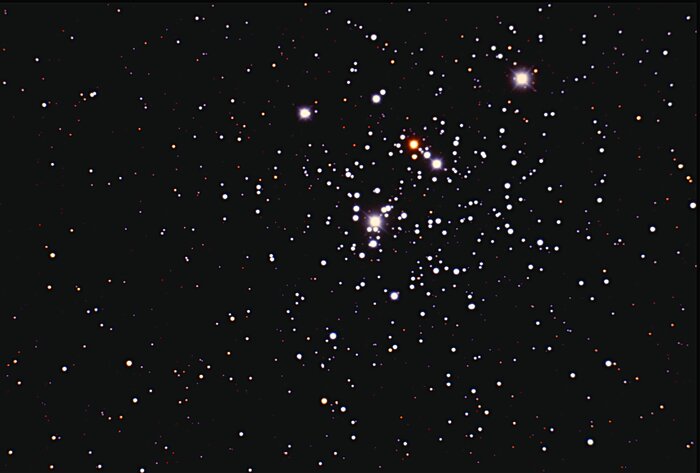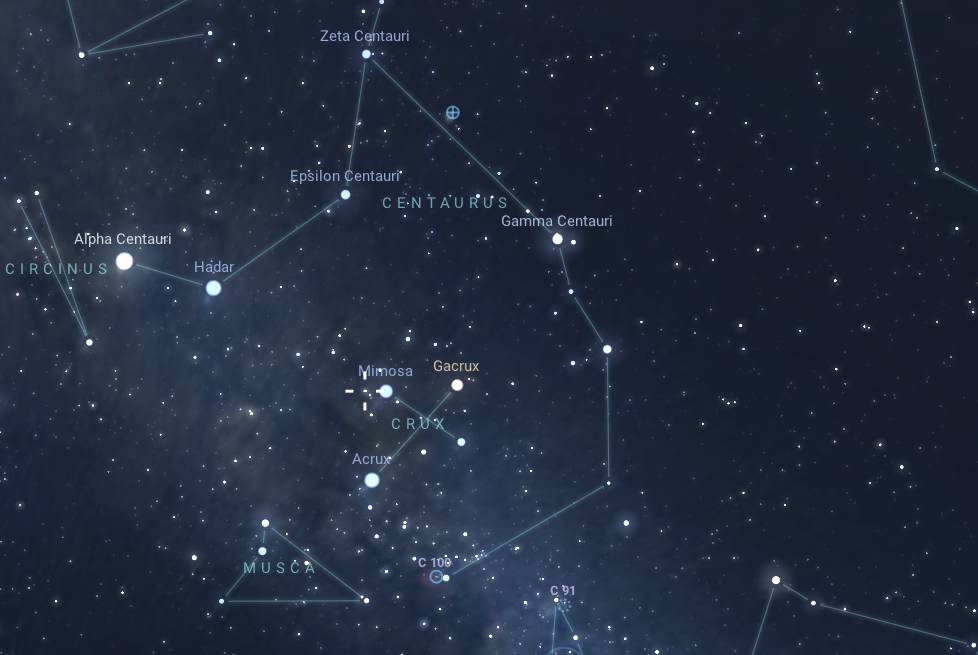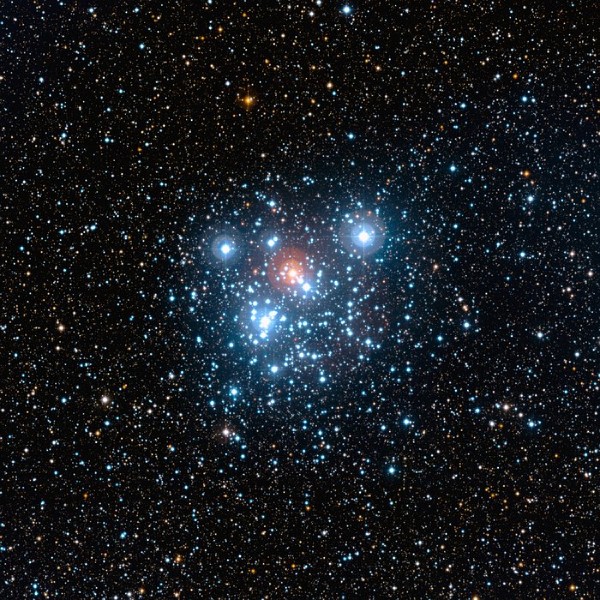The Jewel Box Cluster, also known as NGC 4755 or the Kappa Crucis Cluster, is a renowned open star cluster located in the southern constellation of Crux (the Southern Cross). Positioned approximately 6,440 light-years from Earth, this cluster offers a mesmerizing view, particularly from southern latitudes.
The Jewel Box Cluster was first catalogued by French astronomer Nicolas Louis de Lacaille during his 18th-century expedition to the Cape of Good Hope. Later, in the 19th century, Sir John Herschel observed and described it in greater detail. Its popular nickname, “Jewel Box,” arose from its striking appearance when viewed through a telescope, as the colourful array of stars resembles a collection of sparkling jewels.
Physical Characteristics
NGC 4755 consists of about 100 stars, with a notable variety of colours and types. The stars in the cluster range from hot, young, blue-white stars to cooler, reddish stars, lending the cluster its characteristic vibrance. The most prominent stars are exceptionally luminous and young, having formed only around 14 million years ago, a relatively brief period in cosmic terms. The mix of stellar colours and types makes it an excellent site for observing young stars at different stages of their development, contributing valuable insights into stellar evolution.
The compact nature of NGC 4755, spanning about 10 arcminutes in diameter, creates a stunning, dense arrangement of stars. The contrast in colours—ranging from vivid blue to warm yellow and deep red—offers a visually appealing tableau, especially when seen through telescopes, where the arrangement resembles a true “jewel box.”

Observation
With an apparent magnitude of about 4.2, the Jewel Box Cluster can be seen with the naked eye under dark skies. However, its beauty truly unfolds through telescopes, revealing the full spectrum of star colours and the tight, gem-like formation. It is best observed from the Southern Hemisphere, particularly during the summer months of December to February when the constellation Crux is high in the sky.
The cluster’s brightness, small size, and stunning appearance make it a popular target for amateur astronomers, while its relatively young age and proximity to Earth also attract professional interest. Observers across the Southern Hemisphere enjoy this unique and vibrant stellar cluster, making it one of the most beloved features of the southern night sky.




